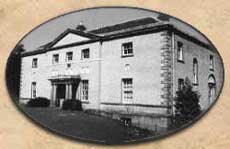|
We are delighted to welcome you to Avondale Forest Park. Avondale is, of course,  part of our history and witnessed the triumph and tragedy of one of the great leaders of our nation: Charles Stewart Parnell. part of our history and witnessed the triumph and tragedy of one of the great leaders of our nation: Charles Stewart Parnell.
The Forest Park is some 214 hectares in extent and lies mainly on the west bank of the Avonmore River. In its miles of roads and woodland paths it offers endless variety to the walker free from the tyranny of the motor car, and its scenic variety ranges from the magnificent openness of the Great Ride to the towering impressiveness of the massed conifers on the banks of the Avonmore.
You can either follow the Nature Trail or if you prefer you can wander through the Park as your fancy dictates or you could take the four-mile River Walk, which is signposted by a series of green arrows, and enjoy the solitude of the woodland.
The name Avondale appears for the first time in 1777 in Taylor and Skinners Maps of the Roads of Ireland. In that same year Samuel Hayes built Avondale House on a site adjoining his existing residence, which he had named Hayesville. It would seem that Hayes then decided to call the whole area Avondale.
Hayes, a barrister represented Wicklow in the Irish House of Commons and in 1788 presented a bill to Parliament entitled, An act for encouraging the cultivation and better preservation of trees. Due to his love of trees he wrote the first book on planting trees in Ireland. All of the oldest trees still surviving on the estate were planted by Hayes and are mostly represented by the beeches, oaks, larches and two gigantic silver firs by the river.
When Samuel Hayes died in 1795 Avondale passed to the Parnell Family and remained in their possession until John Howard Parnell, brother of Charles Stewart following his death in 1891 sold the heavily encumbered estate.
The entire property was eventually acquired by the State in 1904 from William Boylan of Phibsboro, Dublin and a plan for planting a series of experimental plots embracing a wide range of trees, mostly exotic, was made by the then Director of Forestry in Ireland A. C. Forbes, in co-operation with Professor Augustine Henry. These plots were generally one acre in extent and were mostly laid out on the lines of a continental forest garden. You can still see these today, flanking the magnificent Great Ride, which provides possibly the most beautiful of Avondale's many walks.
Avondale House was used as a training school for foresters and some repairs to the decaying building were carried out in 1935. More recently a more extensive job of adaptation of the house as a Forestry School was undertaken by the OPW. Little structural alteration was required but the building was generally in poor condition and in addition it was necessary to provide Dining and Kitchen facilities and accommodation for matron and staff. as well as central heating and other modern facilities.
A second part of the contract was to erect a separate two-storey building flanking Avondale House to provide dormitory and study quarters for those attending the school.
Because of its extensive use as a Forestry School public access is restricted to a portion of the house. The house is open all year round from 11am to 6pm daily. (Except Christmas Day and Stephens Day)
|
|
|

